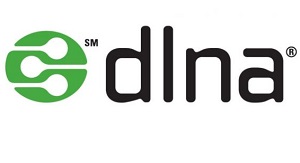DLNA Extends Bridge Between Pay-TV Services & Retail CE Devices

Taking a step closer toward a system that will enable gaming consoles, PCs, Blu-ray players and smart TVs to support an MVPD’s full range of subscription video services while retaining a consistent user interface, the Digital Living Network Alliance on Tuesday released its “CVP-2” guidelines.
The release of the CVP-2 guidelines, which could support the sort of retail video device ecosystem envisioned by organizations such as the AllVid Tech Company Alliance, means that DLNA members can begin to build products for a certification testing program that’s slated to get underway in September, DLNA said.
DLNA’s membership group is comprised of several major pay-TV providers and their suppliers, including Comcast, Time Warner Cable, Cox Communications, Samsung, Arris, Sony, LG, and Broadcom, among others. CableLabs, the cable industry’s R&D house and interoperability specialist, is also a member of the Alliance. Among those absent from that group so far is TiVo.
The new guidelines come into play as AllVid continues to press the FCC to embark on a new rulemaking that would establish a successor to the CableCARD that could be applied to all MVPDs, and not just cable operators. Led by the National Cable & Telecommunications Association, the cable industry has argued that the FCC should allow the marketplace to evolve without additional government mandates.
DLNA noted that the FCC has determined CVP-2 is believed to comply with the Commission’s requirement that operators support an open system that enables HD streaming over home networks to CE devices. Those requirements (recordable HD video, closed captioning data, service discovery, video transport and remote control command pass-through) are currently scheduled to take effect on June 2, 2014.
CVP-2-Certified Products Could Emerge In Q4
There are no CVP-2 devices in the market yet (DLNA expects to see products achieve CVP-2 certification by the fourth quarter of this year), but DLNA backers envision a system in which CVP-2-enabled gateways/servers could be paired with gaming consoles, media streamers, and other types of CE devices that also support the technology. That combination, they claim, will enable MVPDs to deliver their full subscription video service (as well as its navigation system/user face) over a protected IP-based home network.
Multichannel Newsletter
The smarter way to stay on top of the multichannel video marketplace. Sign up below.
Instead of having to create individual native apps for each individual CE device, the new DLNA guidelines will instead provide MSOs with the means to offer their complete range of services, including premium content and access to DVR-stored content, at full HD resolution, while also supporting all regulatory requirements, explained David de Andrade, Comcast’s vice president, software architecture, who spoke on behalf of the DLNA.
One challenge early on will be to generate more adopters and to establish a broad CVP-2 product and service provider ecosystem. If development of this ecosystem is successful, the hope is that it will open up retail video device options for full-freight pay-TV services while also reducing the reliance on MVPD-supplied devices.
CVP-2 At A Glance
On the technical end, CVP-2 guidelines include Digital Transmission Content Protection over Internet Protocol (DTCP-IP) and authentication capabilities that establish a common, automated and secure mechanism for verifying CVP-2 on client devices, the DLNA said. The guidelines also support remote diagnostics and use MPEG-DASH adaptive bit rate streaming.
The new guidelines are also a successor to CVP-1, which allowed only for limited DVR content sharing between an MSO-supplied box and DLNA-certified equipment. In addition to device authentication, adaptive streaming, and remote diagnostics, CVP-2 also supports ad insertion.
The new DLNA guidelines will also enable a remote user interface (RUI) capability that will enable operators to extend their UI to other CVP-2-capable devices over the home network in HTML5 format. The UI will be delivered either via the home gateway or directly from the cloud, de Andrade said.
Cable Support
Comcast has not set any specific timelines for supporting CVP-2, but de Andrade said the MSO will support it in the Reference Design Kit (RDK) software stack and will incorporate it in devices and interfaces that power its X1 platform, such as the XG1, a six-tuner HD-DVR. Other devices under development at Comcast, including a “headless” gateway called the XG5 and an all-IP HD client device called xi3, are expected to support the new DLNA guidelines.
“Providing our products and services on the devices that our customers love and use is increasingly important to us,” said Mark Hess senior vice president, Comcast Cable, in a statement. “The DLNA CVP-2 Guidelines will provide a standardized platform for Comcast customers to watch the content they want on a broad range of devices within the home.”
"The CVP-2 standard enables the continued innovation and evolution of the multi-platform video experience,” added Steve Necessary, vice president of product development, Cox Communications, in the release. “This effort will enable Cox to expand the ecosystem of devices that integrate with our highly personalized Contour service offering by giving customers the flexibility to choose the device platform that best suits their needs.”
Though many operators will support the new guidelines on the home networking using Multimedia over Coax Alliance (MoCA) technology early on, it’s expected that they will also use Ethernet and WiFi.
“The guidelines are intended to support many home networking configurations,” de Andrade said.
